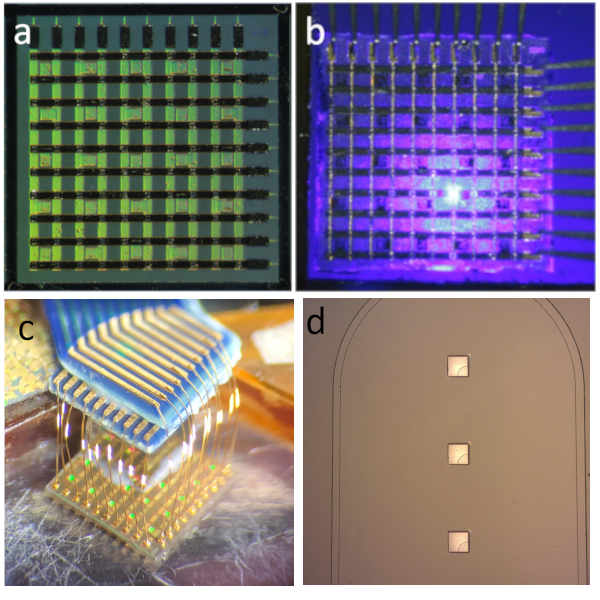HearLight is an EU-funded project involving 5 institutions and one industry partner and aims to boost precision in auditory rehabilitation strategies for a broad range of deafness conditions. The consortium is led by the Institut Pasteur’s Hearing Institute in Paris by Dr. Brice Bathellier. We are investigating a radically new approach that targets the brain rather than the ear. It combines bioelectronics and optogenetics technologies to apply precise stimulation patterns in the auditory cortex, a crucial brain area for auditory perception.
Initial experiments are being conducted using rigid µLED devices mounted onto the mouse cortical surface. The next devices will be on a flexible substrate to conform to the cortical surface better.




